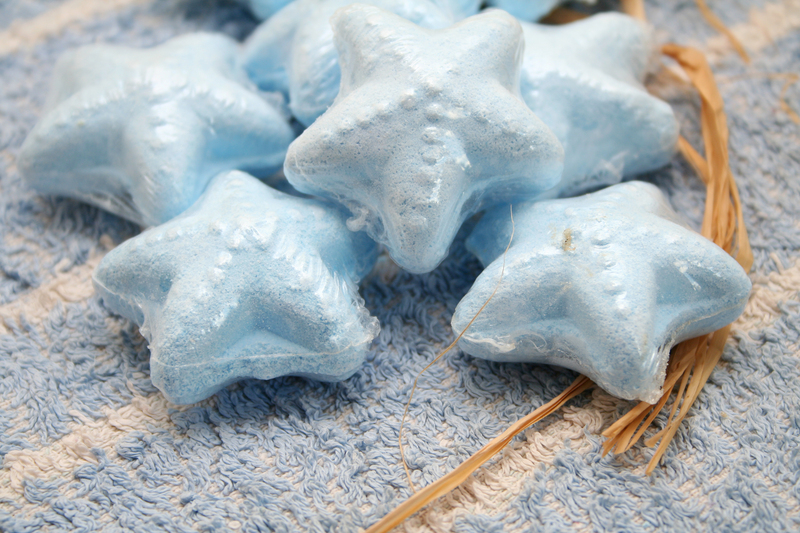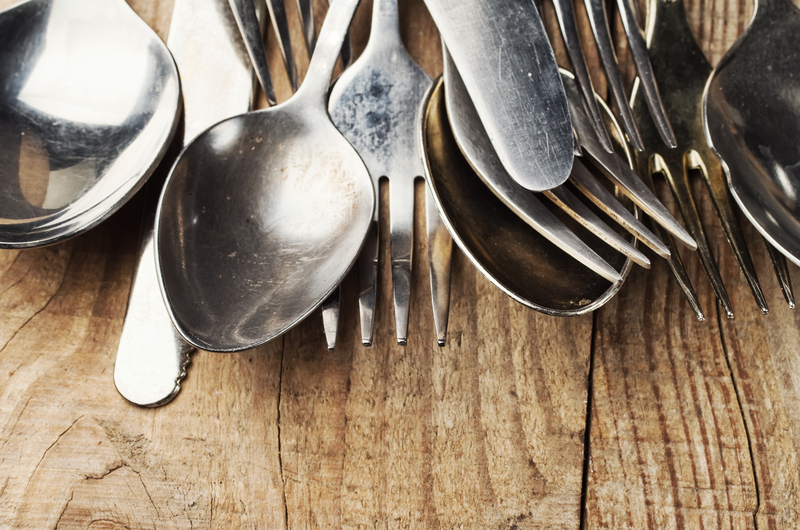Turn Your Stovetop Sparkling Clean by Erasing Tough Burnt Residue
Posted on 24/09/2025
Turn Your Stovetop Sparkling Clean by Erasing Tough Burnt Residue
A gleaming, residue-free stovetop isn't just about aesthetics--it's also about hygiene, kitchen safety, and prolonging the life of one of the most used appliances in your home. Over time, burnt-on grime and spills can accumulate on your stove, making it look dull and even hindering its performance. If you've ever struggled with removing burnt residues from your stovetop, you're not alone! In this comprehensive guide, discover effective methods and pro tips to turn your stovetop sparkling clean by erasing tough burnt residue.

Why Cleaning Stovetop Burnt Residue Matters
It's easy to overlook minor spills or splatters on your stovetop after a busy meal prep. However, letting residues build up can lead to:
- Reduced efficiency: Burnt residue can insulate burners, hindering heat transfer and cooking performance.
- Dangerous fumes: Charred food may release unpleasant - or even harmful - fumes when reheated.
- Kitch Hygiene: Grease and food debris attract pests and bacteria.
- Risk of fire: Accumulated grease significantly increases fire risk in home kitchens.
Types of Stovetops and Their Cleaning Needs
Before diving into cleaning solutions, it's important to consider the specific type of stovetop you have. Different surfaces demand different care:
- Gas Stovetops: Feature removable burners and grates, which can hide significant buildup underneath. Typically constructed from stainless steel, porcelain, or enamel.
- Electric Coil Stoves: Have raised, exposed coils over drip pans that often collect crusted-on spills.
- Glass or Ceramic (Smooth-Top) Stoves: Sleek design requires special attention, as abrasives may scratch the surface.
- Induction Stoves: Though less prone to residue since spills don't burn on as easily, they still need gentle routine cleaning.
Let's explore multiple burnt residue removal techniques tailored for every stovetop variety.
How to Remove Tough Burnt Residue from Any Stovetop
1. Safety First: Preparations Before Cleaning
- Ensure all stove controls are turned off and burners are cool to touch.
- If possible, unplug the appliance or turn off the gas supply for extra safety.
- Wear gloves to protect your hands against scalding water, chemicals, or sharp debris.
- Read your appliance manual for specific cleaning recommendations and restricted products.
2. Gather Your Stovetop Cleaning Supplies
- Baking soda and vinegar (for natural cleaning power)
- Mild dish soap
- Hot water
- Plastic or silicone spatula or scraper
- Non-abrasive sponge or microfiber cloth
- Old toothbrush for crevices
- Commercial stove cleaner (optional, for heavy-duty cases)
- Paper towels or soft lint-free cloth
Step-by-Step Guide: Achieving a Sparkling Clean Stovetop
1. Soften and Pre-Lift Burnt Residue
If the burnt residue has formed a tough, crusty layer, softening it is essential. Start by soaking a cloth in hot, soapy water and laying it over the affected area for 15-20 minutes. This helps to loosen the stubborn buildup, making the remaining steps much easier.
2. Baking Soda Paste Magic
Baking soda is a miracle worker for removing burnt-on spills without leaving scratches. Here's how to make the most of it:
- Mix a few tablespoons of baking soda with enough water to form a thick paste.
- Spread the paste generously over the residue.
- Let it sit for at least 15 minutes.
- Gently scrub with a damp, non-abrasive sponge or microfiber cloth in circular motions.
- Use a plastic spatula or scraper to lift stubborn bits.
3. Vinegar: The Stovetop Grease Eraser
White vinegar is an acidic powerhouse that helps dissolve burnt-on grease and neutralizes odors. Combine vinegar with baking soda for even more cleaning punch:
- After scrubbing with baking soda, spritz vinegar over the surface.
- It will fizz as it reacts with the baking soda, helping to further break down residue.
- Leave it to bubble for a few minutes, then wipe clean with a damp cloth.
4. Specialized Techniques for Different Stovetops
- Gas Stovetop: Remove grates and burner caps; soak them in hot soapy water. Use a toothbrush to scrub crevices. Wipe the main surface with baking soda paste. Use a toothpick for cleaning out burner holes if clogged.
- Electric Coil Stove: Carefully remove coils (ensure they're fully cool and unplugged if possible). Soak the drip pans. Clean coils by wiping with a damp cloth; avoid submerging them in water. Remove burnt-on material from drip pans using baking soda paste.
- Glass or Ceramic Stove Top: Never use metal scrapers or abrasive pads, which can cause scratches. Apply baking soda paste, leave it for 15 minutes, then gently scrub. For extremely stubborn spots, use a specialized ceramic cooktop cleaner and a non-scratch scraper designed for glass tops.
5. For Ultra-Tough Burnt Residues
If standard methods aren't enough to erase stubborn burnt stains, try these advanced tips:
- Make a paste from hydrogen peroxide and baking soda for extra whitening and lifting power (avoid this on colored enameled surfaces).
- Use a commercial degreaser or heavy-duty stovetop cleaner for deep-cleaning sessions.
- Lay a warm, damp towel over scorch marks for 30 minutes, then scrape gently with a plastic tool.
- For persistent carbonized patches, use a cooktop razor (for glass only) at a steep angle, taking care not to gouge the surface.
Natural Solutions vs. Commercial Cleaners--Which Wins?
Should you choose natural remedies or reach for commercial products? Here's a quick comparison:
- Natural Solutions (Baking Soda & Vinegar): Safe, gentle, inexpensive, environmentally friendly, and highly effective for routine cleaning and most burnt food stains.
- Commercial Cleaners: Stronger on heavy build-up or greasy messes, especially formulated for specific stove surfaces. Contains chemicals--always ventilate your kitchen and read labels for compatibility.
How to Keep the Stovetop Sparkling Clean: Maintenance Habits
Why wait until burnt residue becomes a pain to remove? Establish these ongoing habits to keep your stovetop in impeccable condition:
- Wipe spills immediately: Especially after cooking, before anything bakes on.
- Deep clean weekly: Even if it looks clean, small drips may be waiting to char.
- Remove and soak grates, drip pans, and removable parts once a week.
- Check burner holes: Clean out blockages regularly to ensure even heating and avoid gas safety issues.
- Use stove covers or burner protectors: These catch spills and are easy to replace or clean.
- Ventilate your kitchen: Prevent grease from settling by using the exhaust fan when frying or sauteing.
Consistent care eliminates the need for heavy-duty stain removal and ensures your appliance always shines.
Common Mistakes to Avoid When Cleaning Your Stovetop
- Using metal scrubbers: These can scratch and damage all types of stovetops, especially glass and ceramic surfaces.
- Pouring water directly on electric coils: This can short out components or cause shocks.
- Rushing: Allow soaking time for cleaning agents to work, reducing the need for forceful scrubbing.
- Ignoring manufacturer's guidance: Always check your stovetop's specific cleaning recommendations.
- Neglecting the underside and control knobs: Burnt food and grease tend to collect here, too. Remove and clean knobs regularly.

Frequently Asked Questions About Erasing Burnt Residue
-
What if the burnt stain won't come off at all?
Try repeated cycles of soaking, baking soda paste, and vinegar. For glass tops, a dedicated razor scraper can help, but be gentle. Persistent stains may require professional cleaning for restoration. -
Can I use oven cleaner on my stovetop?
Many oven cleaners are too harsh for stovetop surfaces and can cause discoloration or damage, especially on glass or ceramic tops. Use products labeled "stove safe." -
How do I clean around stove knobs and controls?
Most knobs can be gently pulled off, then washed in warm, soapy water. Wipe the control panel with a damp, soapy cloth (never soak). -
What's the best way to get rid of burned-on sugar or syrups?
Prepare a baking soda and vinegar paste, apply it, and let it sit for 30 minutes. For glass, use a cooktop razor with extreme caution. Repeat as needed. -
Is it okay to use lemon juice instead of vinegar?
Yes! Lemon juice is mildly acidic and helps break down grease while imparting a fresh scent.
Summary: Achieve a Sparkling Clean Stovetop Every Time
Turning your stovetop sparkling clean by erasing tough burnt residue is entirely achievable with a little patience, the right supplies, and a consistent cleaning strategy. To recap:
- Identify your stovetop type and choose cleaning agents accordingly.
- Start by softening burnt residue to make scrubbing easier.
- Use natural abrasives like baking soda and the dissolving power of vinegar for most messes.
- Employ commercial cleaners or specialized tools only when needed--always with caution.
- Adopt diligent maintenance routines to minimize buildup and maximize your stove's lifespan.
The kitchen is the heart of your home, and a spotless stove gleams as its centerpiece. With the methods laid out above, you'll erase stubborn burnt residue and keep your cooking space looking inviting, safe, and truly sparkling clean.


